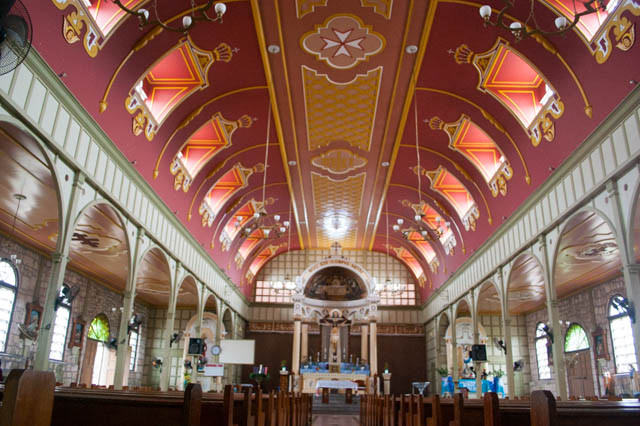Blissfully situated in the Calamian Group of Islands in Palawan, Philippines, the municipality of Culion is an erstwhile leper colony during the American colonial period. It was picked as a colony because of its sheer isolation, and its topography offers great opportunities to leprosy-inflicted patients to engage in agricultural activities.
Culion was once the largest leper colony in the world.
In 1906, the first group of patients from Cebu arrived in Culion aboard two coastguard cutters. Leprosy was perceived as infectious and incurable disease back in the days. By 1907, the Leprosy Segregation Law was implemented and the sanitary inspectors were given the power to isolate and segregate leprosy patients. Many “lepers” from across the Philippines were forced to transfer to Culion. By the 1930’s, there were over 16,000 patients on the island, making it the largest – and most well-equipped and well-organized – leprosarium in the world.
And after years of being infamously hailed as the “Island of the Living Dead”, Culion was finally declared as leprosy-free in 2006 by the World Health Organization. Today, this tranquil town – though still lurking in the shadow of its bigger neighbor Coron – awaits discovery.
Fort Culion was built in 1740.
How to get there:
Philippine Airlines has flights to Busuanga from Manila. From Busuanga Airport, take a passenger van to Coron town for Php 150 per person. Travel time is about 1 hour. At Coron town, take a tricycle to Coron Port, fare is Php 10 per person. Large outrigger boats to Culion leave Coron at 1:00 P.M -1:30 PM, fare is Php 180 and travel time is approximately 1.5 hours. Boats from Culion going back to Culion leaves at 7:30 A.M – 8:30 A. M. depending on which boat will be traveling.
Where to Stay:
The lack of choices for accommodations in Culion disappoint, but there are some acceptable choices like Safari Lodge – walking distance from the port – that offers spartan fan rooms for Php 450 (cheapest in town), contact # +63 998 418 1763. Here you can sit on a plastic chair and have a freshly cooked meal while enjoying a priceless view of Culion Bay.
Things to Do:
Most tourist spots are concentrated near the promontory where Culion Church (Immaculada Concepcion Church) is standing.
The Culion Museum and Archives houses photos and memorabilia of Culion as a leper colony.
Learn about Leprosy in Culion Museum and Archives
Since the Culion Museum and Archives is open from 9:00 A.M to 4:00 P.M only. Rush to Culion General Hospital and pay the entrance fee (Php 100 for locals while Php 150 for foreigners). Built in 1930, this unassuming newly-painted building served as leprosy research center of the Philippines and the Asia Pacific Region back in the olden days. Now it houses photos and memorabilia taken during the height of leper colony as well as a detailed timeline of leprosy history. Also on display is a gigantic bottle with chaulmoogra oil from the chaulmoogra tree that contains curative substances. According to the signage, in 1912, following a report on the success of the use of “Mercado Formula” and Ethyl ester developed by Dr. Eliodoro Mercado, injection clinics were put up in Culion. And in a span of 4 years, it is said that about 4,000 “lepers” have received injections, known as “platcha” treatment. On the second floor, one can find laboratory equipments used for finding a cure for leprosy.
Interior of Culion Church, its walls were built out of live corals from the old fortress.
Pay a Visit to the La Imaculada Church and Culion Fort
Lording over the town, just a stone’s throw away from the museum building is the La Imaculada Concepcion Church, sitting on a hill. Its walls were constructed from live corals, taken from the old fortress – Fort Culion, which was built in 1740. One can still see crumbling ruins of the said fort beside the church with only two cannons left.
Take a Walking Tour
From the promontory, down to the main street leading to Brgy.Balala – the non-leper area during the colony days, where staff and workers reside – one can still encounter remnants of old structures like the Old Presidencia – one of the jails of the colony where misbehaving patients are put into prison. Nearby, the forgotten Sandoval’s House is still standing to date, one of the original dwellings in the island which was turned into a local police headquarters during the establishment of the leper colony.
Agila Hill in Culion with the iconic logo of the Philippine Health Services.
Climb the Agila View Point
Scale up the 330 plus steps of the Agila Hill with the carved logo of the Philippine Health Services, and be mesmerized with the panoramic view of the Culion town and bay and its surroundings.
Snorkel at Crowning Glory Reef
One of Culion’s underrated destinations is the marine protected area of Crowning Glory Reef. According to the owner of Safari Lodge, good snorkeling can be had here –great visibility, iconic rainbow-hued fishes and superb corals.
TRAVEL BLOG CONTENTS
FOLLOW ME ON FACEBOOK FOR TRAVEL GUIDE UPDATES












